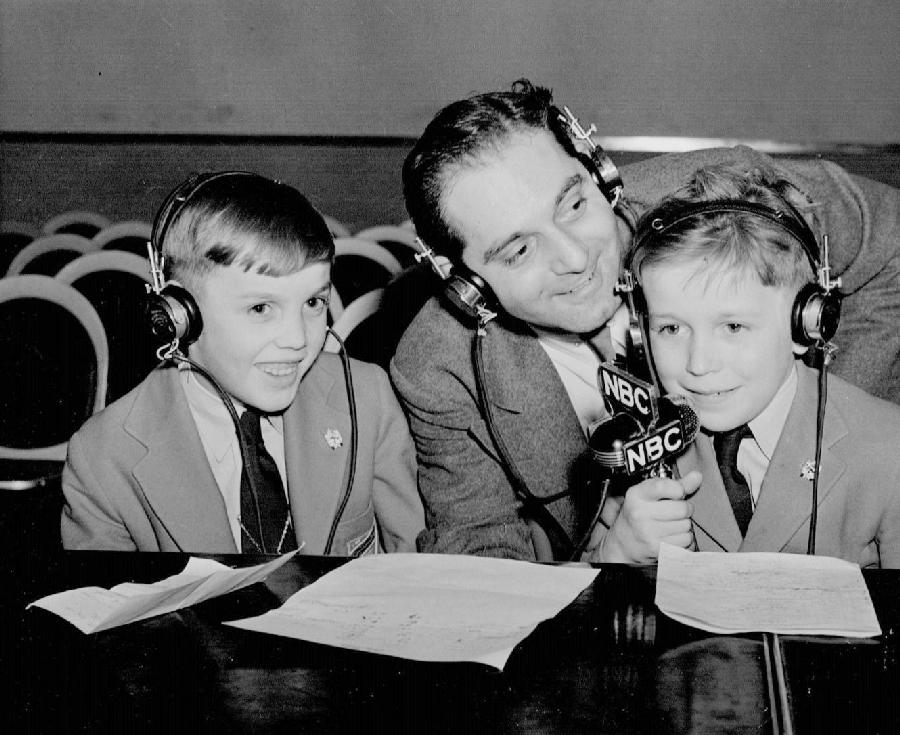
Overseas British Evacuation of Children: Communications (1940-45)

Figure 1.--Here we see two Englidh overseas evacuees having a rare chat with their parents. The press caption read, "This Is No Private Wire: Both hemispheres are eavesdropping on this conversation as Peter Saunders, 10-years old and his brother Collin, 8-years old, have a heart to heart talk with their parents in England while in Washington DC. The National Broadcasting Company (NBC), The Canadian Broadcasting Corporation and the British Broadcasting Corporation (BBC) arrange a 3-way hook up every 4th Sunday at 1:30 PM for British Refugee Children to talk to their parents in England during World War 2. Announcer Ben Grauer is standing by to see that all goes well." Grauer was an American radio and TV personality, following a career during the 1920s as a child actor in films and on Broadway. The photograph is dated April 7, 1941.
|
|
The overseas evacuation program ended after Bensres tragedy (September 1940), but of course thst did not mean the children plscee overseas came home. Unlike the children evacuaed to the countryside within Britain, there was no going home fir the iverseas evacuations until after the War. And even then the return home was not immedaiate because of severe shipping shortages. This meant that the chiildren were away from home for 5 years. That is a long time in the lives of children. Many left as children returned as teenagers. There was only one way to communicate and that was by letter. International phone calls were rediculously expensive and virtually unknown. Children's letters can be very brief, especilly the younger children. The hist family often wrote the parents to provide more detail. Many of he younger children began to lose bonds with theur oarents as they built new lives abd friends in America, often losing their accents. The older children were more firmly rooted with their Btiruish homes and family. And letters from their parents helped to maintain contacts. Children often haveto be prompted to rite letters. We suspect that the host families for the most part did this. It would b interesting to read some of the letters, but have not found samples. There were some radio communications, but only small numbers of the children could participate. The British princesses, Elizabeth and Margret Tose, made radioo broadcasrs for the evacuees. And the American radio networks arranged a few trans-Atlantic conversations between the evacuee children and their parents.
CIH --WW II

Navigate the CIH World War II Section:
[Return to Main British overseas evaciations page]
[Return to the Main World War II British evacuation page]
[Return to Main World War II Atlantic campaign page]
[Return to Main World War II page]
[Biographies]
[Campaigns]
[Children]
[Countries]
[Deciding factors]
[Diplomacy]
[Geo-political crisis]
[Economics]
[Home front]
[Intelligence]
[Resistance]
[Race]
[Refugees]
[Technology]
[Bibliographies]
[Contributions]
[FAQs]
[Images]
[Links]
[Registration]
[Tools]
[Return to Main World War II page]
[Return to Main war essay page]
Created: 5:51 AM 6/11/2018
Last updated: 5:51 AM 6/11/2018



